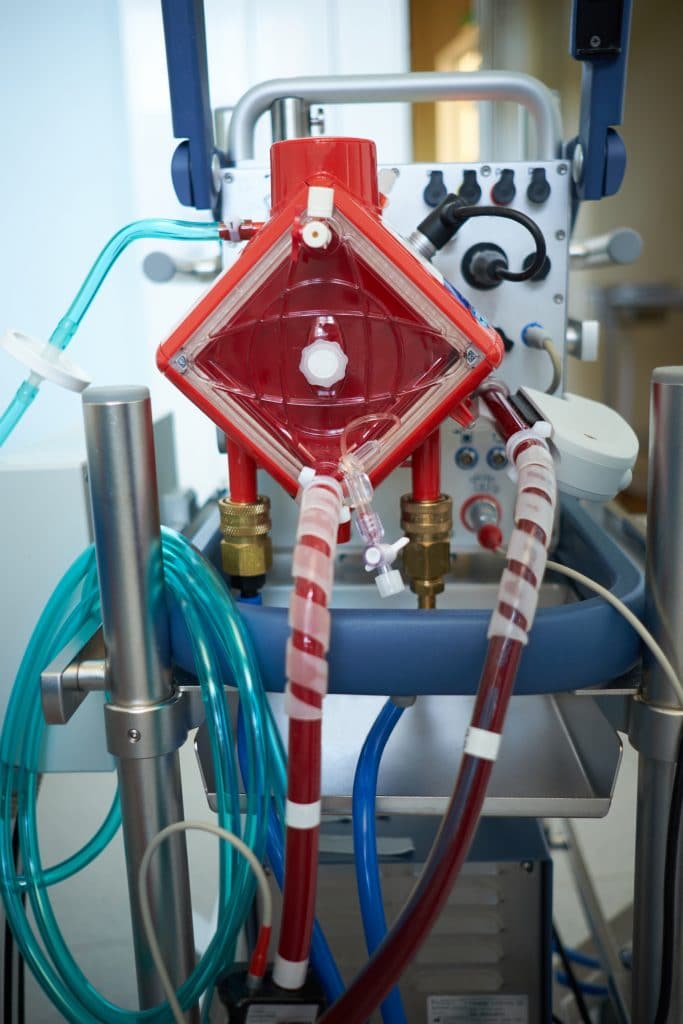Comparison of Circulatory Unloading Techniques for Venoarterial Extracorporeal Membrane Oxygenation

Left ventricular (LV) distention and pulmonary congestion are major complications inherent to venoarterial extracorporeal membrane oxygenation (ECMO). This study aimed to quantitatively compare the hemodynamic differences between common circulatory unloading methods for ECMO. Ten circulatory unloading techniques were evaluated on a mock circulatory loop simulating acute LV failure supported by ECMO. Simulated unloading techniques included: surgical and percutaneous pulmonary artery (PA) venting, surgical left atrial venting, surgical and percutaneous LV venting, atrial septal defect, partial support ventricular assist device, intraaortic balloon pump, and temporary VAD with inline oxygenator (tVAD). The most LV unloading occurred with the surgically placed LV vent and tVAD, which reduced LV end-diastolic volume from 295 to 167 ml and 82 ml, respectively. Meanwhile, the PA surgical vent was the most effective at reducing mean PA pressure from 21.0 to 10.6 mm Hg, and the tVAD was most effective at reducing left atrial pressure from 13.3 to 4.4 mm Hg. The major limitation of this study was the use of a mock circulatory loop, which simulated lower left atrial pressure than is typically seen clinically. This study identified clinically significant hemodynamic variability between the different circulatory unloading techniques evaluated. However, the applicability of these techniques will vary with different patient disease etiology. Further studies on ECMO unloading will help to quantify hemodynamic benefits and establish treatment guidelines.
